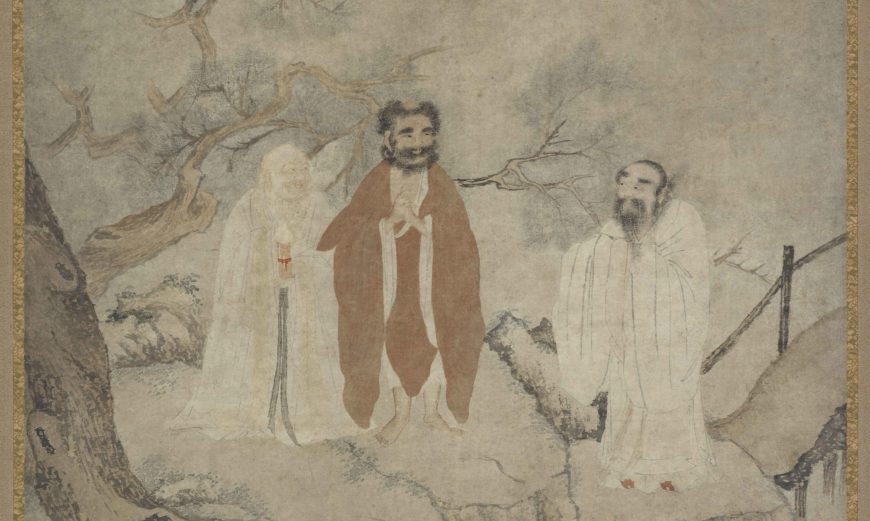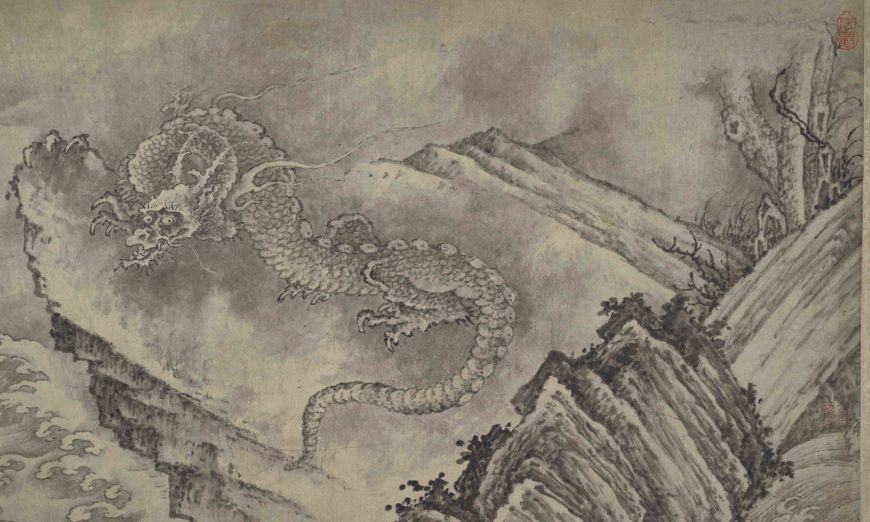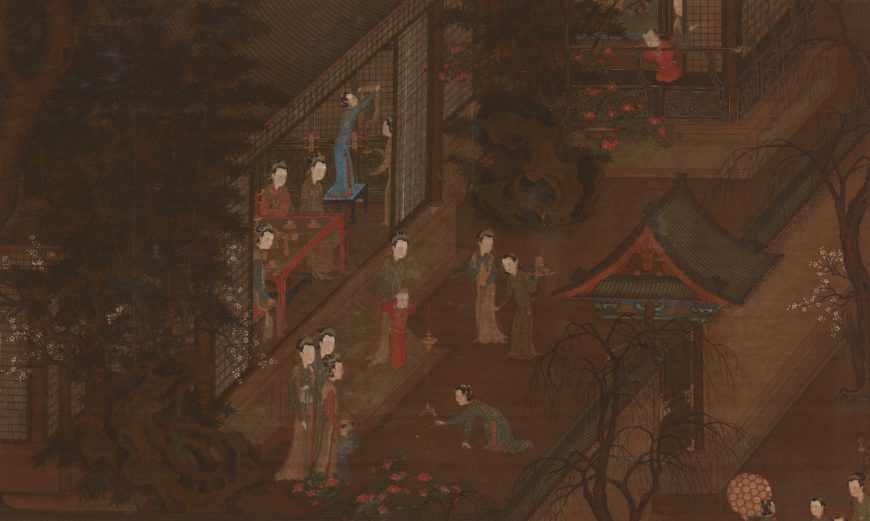Wang Lü, Landscapes of Mount Hua (Huashan), album leaves, 1384 (Ming Dynasty, China), ink on paper (Shanghai Museum), speakers: Dr. Kristen Loring Brennan and Dr. Steven Zucker
Wang Lü studied medicine and climbed the sacred Mount Hua. He recorded that journey, emulating Southern Song painters, in this 40 leaf album—his only extant work.
[0:00] [music]
Dr. Steven Zucker: [0:00] I see this tiny figure walking through this enormous, lush, beautiful landscape. I feel as if I am him and I’m going to be rounding this bend and wondering where the path leads.
Dr. Kristen Loring Brennan: [0:21] We can see in the very distance, up on top of the next mountain peak, a little tiny roof of a pavilion creeping out from on top of the trees.
Dr. Zucker: [0:26] We’re looking at 1 leaf from a series of 40 by an early Ming artist whose name is Wang Lü. He’s referred to as a physician, although we don’t really know much about him. He made these magnificent ink-and-brush images on paper of a very famous mountain in Chinese history.
Dr. Loring Brennan: [0:42] Mount Hua is in Shaanxi province. Shaanxi province is a little bit to the north. The mountain itself is known for being this treacherous vertical form, very otherworldly.
Dr. Zucker: [0:54] Look at the way in which he’s used brushstrokes to define the verticality of that mountain. Those huge faces of rock that seem to jut skyward, to create this otherworldly space that has a deeply spiritual dimension.
Dr. Loring Brennan: [1:07] You can see the contour lines. First, these very rich, fluid lines demarcating the boulders, and then you’ve got these texture strips that give a sense of the roughness of each peak, and then little bits of moss dripping over the sides.
Dr. Zucker: [0:00] Then you’ve also got softer washes of ink, especially in the peaks in the distance.
Dr. Loring Brennan: [1:26] On top of all of it, you’ve got these very dense strokes, these layers upon layers of little, tiny brushstrokes; very fluid, rich black ink of the pine trees.
Dr. Zucker: [1:36] Those pine trees are amazing. They seem so alive with their boughs that seem to, almost like lightning strokes, move in every direction.
Dr. Loring Brennan: [1:43] You can imagine that this is a mountain peak that gets winter storms through it, lots of wind. You can see how the pines have grown into these contorted shapes.
Dr. Zucker: [1:51] This is amazingly complex space, and all of this is done just with black ink. But there is such a spectrum of qualities of that ink that we don’t feel limited in the least.
Dr. Loring Brennan: [2:03] Yeah, we don’t even need color. In fact, landscape originally was not thought to need color. There was so much potential of the brush, this very calligraphic use of the brush, as if you’re writing.
Dr. Zucker: [2:17] Many of the other leaves do use color. They use this subtle blue-green that has a specific reference to the history of Chinese painting.
Dr. Loring Brennan: [2:20] In the Tang Dynasty, the blue-green landscape style benefited from all of these new pigments, these new minerals that were coming through the Silk Road. Here, we see this reference to that. That use of this very subtle ink wash to refer to this paradisaical realm, this otherworldly place.
Dr. Zucker: [2:36] This is a Taoist idea, that the mountain was inhabited by the Immortals, perfected beings. Although that’s not explicitly referenced here, it does exist subtly in the background.
Dr. Loring Brennan: [0:00] As we look more deeply into each of these different leaves, all of them, of course, are done on paper. They’re album leaves, meaning unlike a hand scroll, they don’t unroll, unfurl.
[2:55] They’re specific scenes. Each of them pictures a particular place in the mountain, a particular moment in time that the artist then inscribed, explaining exactly when he visited this place and what those conditions might have been.
Dr. Zucker: [3:09] So these are really personal memories. These are explorations of moments that he remembers from his encounter with this landscape.
Dr. Loring Brennan: [3:14] He’s got moments of solo traveling, perhaps a reference to himself, this idea of journeying on one’s own through the mountain, other times maybe greeting other travelers and taking moments to rest along mountain paths.
Dr. Zucker: [3:30] One of my favorite images seems to be later in his journey, as he’s reached the peaks of at least one of these mountains, where we see a single figure seated just at a peak, looking over a sea of mist.
Dr. Loring Brennan: [3:38] You can imagine the trek that he had to take, this very winding little path behind him. He’s sitting there just taking in the vista as he’s reached the summit.
Dr. Zucker: [3:48] The artist has created the sense of real depth, of real space, even with all the ambiguity of the negative space that is somehow also those clouds.
Dr. Loring Brennan: [3:57] It seems so damp and so misty, you can feel the atmosphere, but then when you look at the mountain you see the dry brushstrokes and you get the sense of the contrast between the very soft, wet clouds and then at the same time the very hard, rough boulders.
[4:11] Wang Lü painted this in 1384. We know that he spent quite a bit of time in these mountains. He didn’t just go here, climb the peak, and come home. He spent time living here, taking in every corner of the landscape and getting to know people, and painted these album leaves to record, to document each of those spaces for his own personal use.
Dr. Zucker: [4:32] I feel so lucky that I have access to this artist’s understanding of this landscape from 700 years ago.
[0:00] [music]





